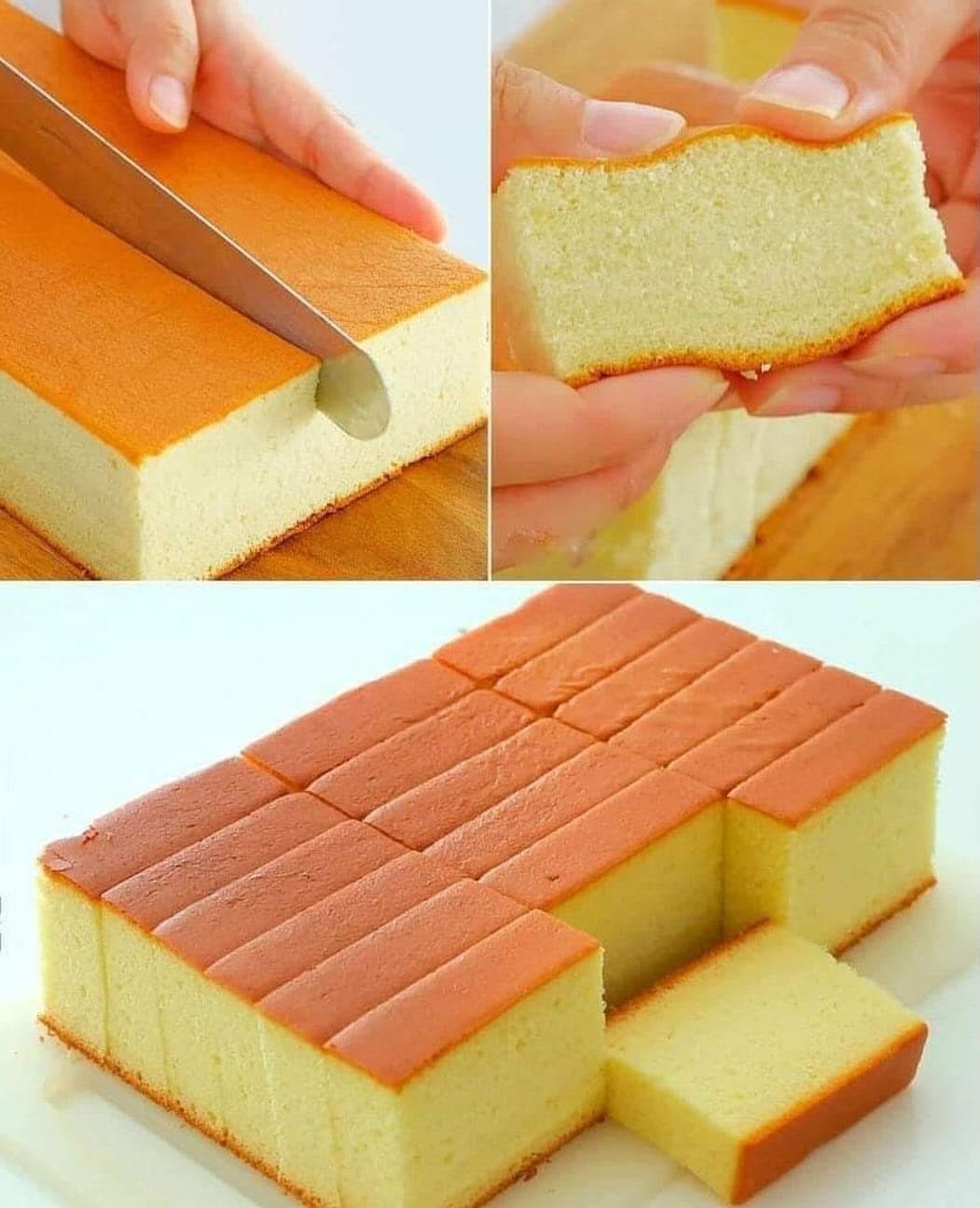1. Prepare the Pan:
- Preheat your oven to 320°F (160°C).
- Line a 9×5-inch loaf pan or a similar rectangular pan with parchment paper, ensuring the paper extends over the sides for easy removal.
2. Beat the Eggs and Sugar:
- In a large bowl, beat the eggs and sugar together using an electric mixer. Whisk on high speed for about 8-10 minutes until the mixture becomes thick, pale, and nearly tripled in volume. This is crucial for creating the light, fluffy texture.
3. Add the Honey and Milk:
- Gently mix in the dissolved honey and milk into the beaten egg mixture. Use a spatula to fold them in carefully.
4. Sift and Fold in the Flour:
- Sift the bread flour over the egg mixture in small batches. Use a spatula to gently fold the flour into the batter, being careful not to deflate the eggs.
5. Pour and Bake:
- Pour the batter into the prepared pan. Tap the pan lightly on the counter to release any air bubbles.
- Bake in the preheated oven for 50-60 minutes, or until the top is golden brown and a skewer inserted into the center comes out clean.
6. Cool the Cake:
- Once baked, remove the cake from the oven and let it cool in the pan for a few minutes. Then, lift it out using the parchment paper and allow it to cool completely on a wire rack.
7. Resting the Cake:
- Traditionally, Castella is wrapped in plastic wrap and allowed to rest overnight before serving. This allows the flavors to deepen and gives the cake a moist, smooth texture.
8. Serve:
- Slice the cake into thick pieces and enjoy with a cup of tea!
Variations of Castella Cake
Over the years, Castella has been reinvented with various flavors and adaptations, often influenced by local tastes and modern twists.
- Matcha (Green Tea) Castella:
- This version incorporates matcha powder into the batter, giving the cake a vibrant green color and the distinct, slightly bitter flavor of Japanese green tea.
- Brown Sugar Castella:
- A deeper, more caramel-like flavor can be achieved by replacing white sugar with brown sugar. This version is popular in Okinawa, where rich brown sugar is a specialty.
- Chocolate Castella:
- For a richer, more decadent cake, cocoa powder can be added to the flour, creating a chocolatey variation of the classic.
- Honey Castella:
- The standard Castella already includes honey, but increasing the honey for a more pronounced flavor creates a stickier, more flavorful cake.
- Cheese Castella:
- A modern, savory twist, adding cream cheese or mascarpone to the batter brings a creamier, tangy flavor. This version often has a denser texture and is less sweet, but incredibly satisfying.
Conclusion
Castella Cake’s journey from Portugal to Japan and its evolution into a beloved confection speaks to the adaptability of this simple, yet elegant dessert. Whether you stick to the traditional recipe or experiment with exciting variations like matcha or chocolate, Castella Cake remains a delightful and timeless treat. Its soft, spongy texture and gentle sweetness make it a perfect cake to serve with tea, coffee, or on its own.
Discover more traditional Japanese desserts and variations in our collection of authentic recipes, and explore how different cultures have influenced the art of baking!Castella Cake, known as “Kasutera” in Japan, is a light, fluffy sponge cake that has captivated dessert lovers for centuries. Originally introduced to Japan by Portuguese traders in the 16th century, Castella has evolved into a beloved Japanese confection, often gifted in beautifully packaged boxes. Made with simple ingredients like eggs, sugar, flour, and honey, this cake is celebrated for its soft texture, delicate sweetness, and golden brown crust.
Let’s explore the rich history of Castella Cake, how to make this airy sponge, and discover its exciting variations.
